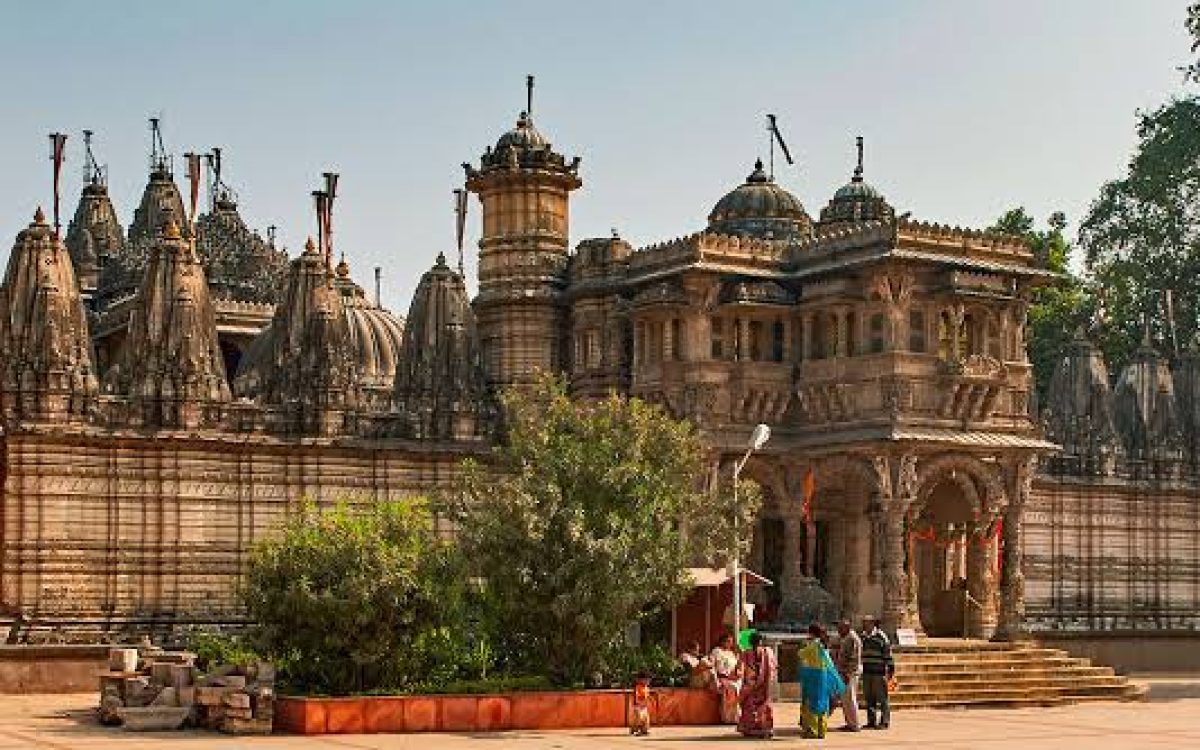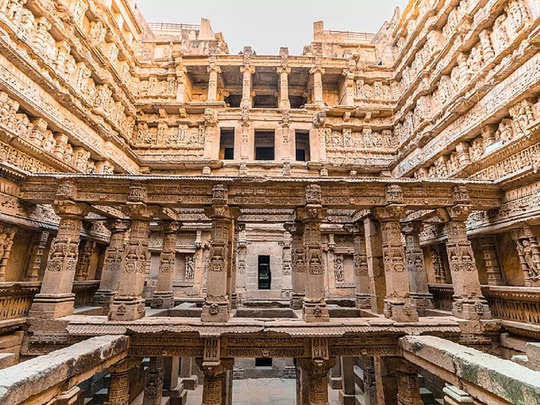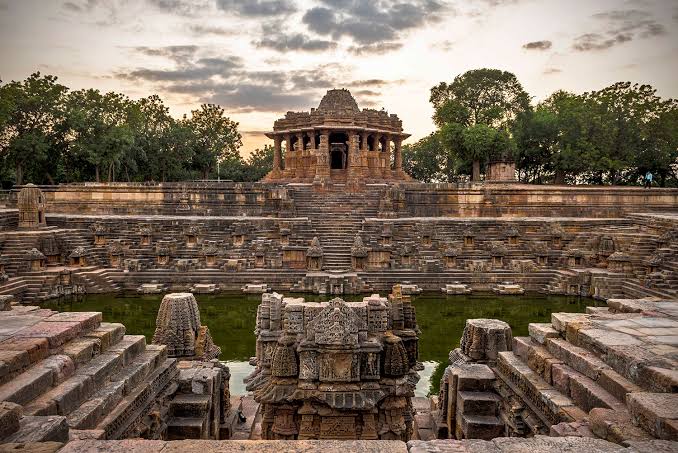Nestled in the heart of Ahmedabad, the Hutheesing Jain Temple stands as a magnificent testament to Gujarat’s rich architectural and spiritual legacy.Built in 1848 by Seth Hutheesing, a wealthy Jain merchant, this temple is dedicated to Lord Dharmanatha, the 15th Jain Tirthankara.
It captivates visitors with its intricate carvings, majestic pillars, and serene ambiance, making it a revered place of worship and a stunning example of Jain architecture.
The Historical Legacy of Hutheesing Jain Temple
The temple was originally commissioned by Seth Hutheesing, but after his passing, his wife Sethani Harkunvar completed its construction. Built during a period of severe famine, the project provided employment to hundreds of artisans and workers.
This noble initiative not only resulted in a magnificent temple but also stood as a symbol of compassion and resilience.
Today, the temple remains one of Gujarat’s most significant Jain temples, attracting devotees and tourists from all over India.
Architectural Brilliance: A Masterpiece of Jain Craftsmanship
The Hutheesing Jain Temple is an architectural gem, beautifully blending Maru-Gurjara and Indo-Islamic styles. Every detail showcases exceptional craftsmanship.
Key Highlights of the Temple Complex
🔹 Main Shrine (Gabhara) – A pristine white marble idol of Lord Dharmanatha sits at the heart of the temple, adorned with exquisite carvings and gold embellishments.
🔹 Mandapa (Pillared Hall) – This intricately designed hall features finely sculpted pillars, each depicting tales from Jain scriptures and showcasing superior artistry.
🔹 Manastambha (Victory Tower) – Standing 78 feet tall, this intricately carved tower was inspired by the Kirti Stambh of Chittorgarh and symbolizes Jain values of peace and non-violence.
🔹 Ornate Sculptures – Every corner of the temple is decorated with sculptures of Tirthankaras, celestial beings, and floral motifs, reflecting artistic brilliance.
Spiritual Significance
More than just a historical site, Hutheesing Jain Temple embodies the core principles of Jainism:
✔ Ahimsa (Non-Violence) – Advocating peace and respect for all life forms.
✔ Anekantavada (Multiplicity of Truths) – Encouraging tolerance and understanding of diverse perspectives.
✔ Aparigraha (Non-Possessiveness) – Promoting simplicity and detachment from materialism.
The soothing sound of temple bells and the gentle fragrance of sandalwood incense create a peaceful retreat, perfect for meditation and spiritual reflection.
Cultural & Historical Significance
🔹 A Testament to Generosity – The temple’s construction during a devastating famine provided much-needed employment and became a beacon of hope and philanthropy.
🔹 Grand Celebrations & Rituals – The temple comes alive during Mahavir Jayanti and Paryushan Parva, drawing thousands of devotees for grand festivities.
These cultural elements make Hutheesing Jain Temple not just a religious site but a living heritage woven into Gujarat’s spiritual fabric.
Visiting Hutheesing Jain Temple: Essential Information
📍 Location: Shahibaug, Ahmedabad, Gujarat
⏳ Best Time to Visit: October to March (Pleasant weather enhances the experience.)
🕰 Timings: Open daily from 8 AM to 5 PM
🙏 Entry: Free (Visitors should maintain silence and respect temple customs.)
The Hutheesing Jain Temple is more than a place of worship—it is a timeless symbol of faith, artistry, and philanthropy. Whether you are a devotee, an architecture enthusiast, or a traveler exploring Ahmedabad’s rich heritage, this temple offers an experience that is both serene and awe-inspiring.
✨ Step into this sacred sanctuary and witness the elegance and devotion carved in stone! ✨






